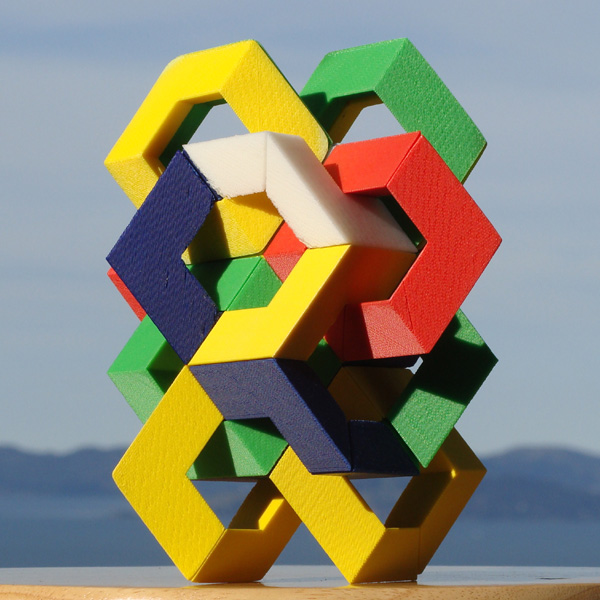Carlo H. Séquin
Professor of Computer Science, EECS Department, University of California
http://www.cs.berkeley.edu/~sequin/
"My professional work in computer graphics and geometric design has also provided a bridge to the world of art. In 1994 I started to collaborate with Brent Collins, a wood sculptor, who has been creating abstract geometrical art since the early 1980s. Our teamwork has resulted in a program called "Sculpture Generator 1" which allows me to explore many more complex ideas inspired by Collins' work, and to design and execute such geometries with higher precision. Since 1994, I have constructed several computer-aided tools that allow me to explore and expand upon many great inspirations that I have received from several other artists. It also has resulted in many beautiful mathematical models that I have built for my classes at UC Berkeley, often using the latest computer-driven, layered-manufacturing machines. My profession and my hobby interests merge seamlessly when I explore ever new realms of 'Artistic Geometry'."
“Honeycomb ”
2008, ABS Plastic from a Fused Deposition Modeling machine, 4" x 6" x 7" tall
This assembly of 16 6-segment polyhedral ring-tiles demonstrates an isohedral tiling of 3D space based on the diamond lattice. Each tile of genus 1 is based on a hexagonal skew polygon with 109 degree angles as formed by carbon atoms in the "chair" configuration. Each ring interlinks with six nearest neighbor rings. The top two rings in "Honeycomb" are split "longitudinally" into two identical, skinnier 6-segment rings to demonstrate that it is also possible to make an isohedral tiling of 3D space in which each ring interlocks with 12 identical neighbors.
“ Metropolis”
2008, ABS Plastic from a Fused Deposition Modeling machine,
5" x 5" x 5" tall

This assembly of 22 cube frames is reminiscent of the towering sterile skyscrapers in the background in the classic movie "Metropolis." The cube frames have been produced individually in two halves on a Fused Deposition Modeling machine and have then been hand-assembled. Each cube frame is a handle-body of genus 5 and constitutes a highly symmetrical isohedral tile of 3D space. It is derived from the body-centered cubic lattice. The assembly consists of two interlocking lattices, which individually are composed of non-interlocking cube-frame tiles.